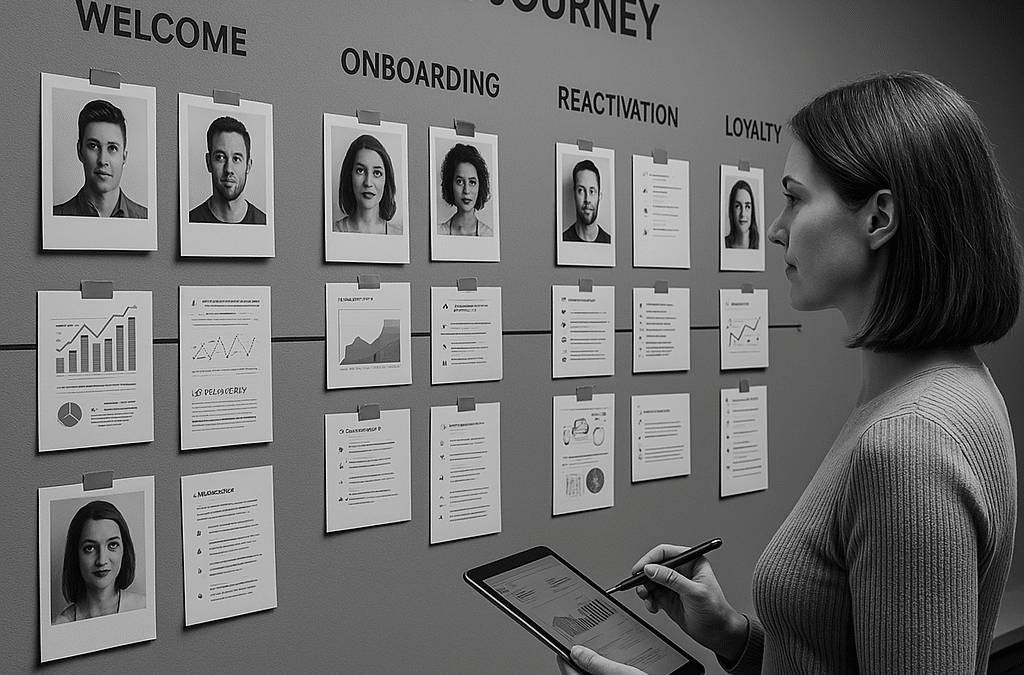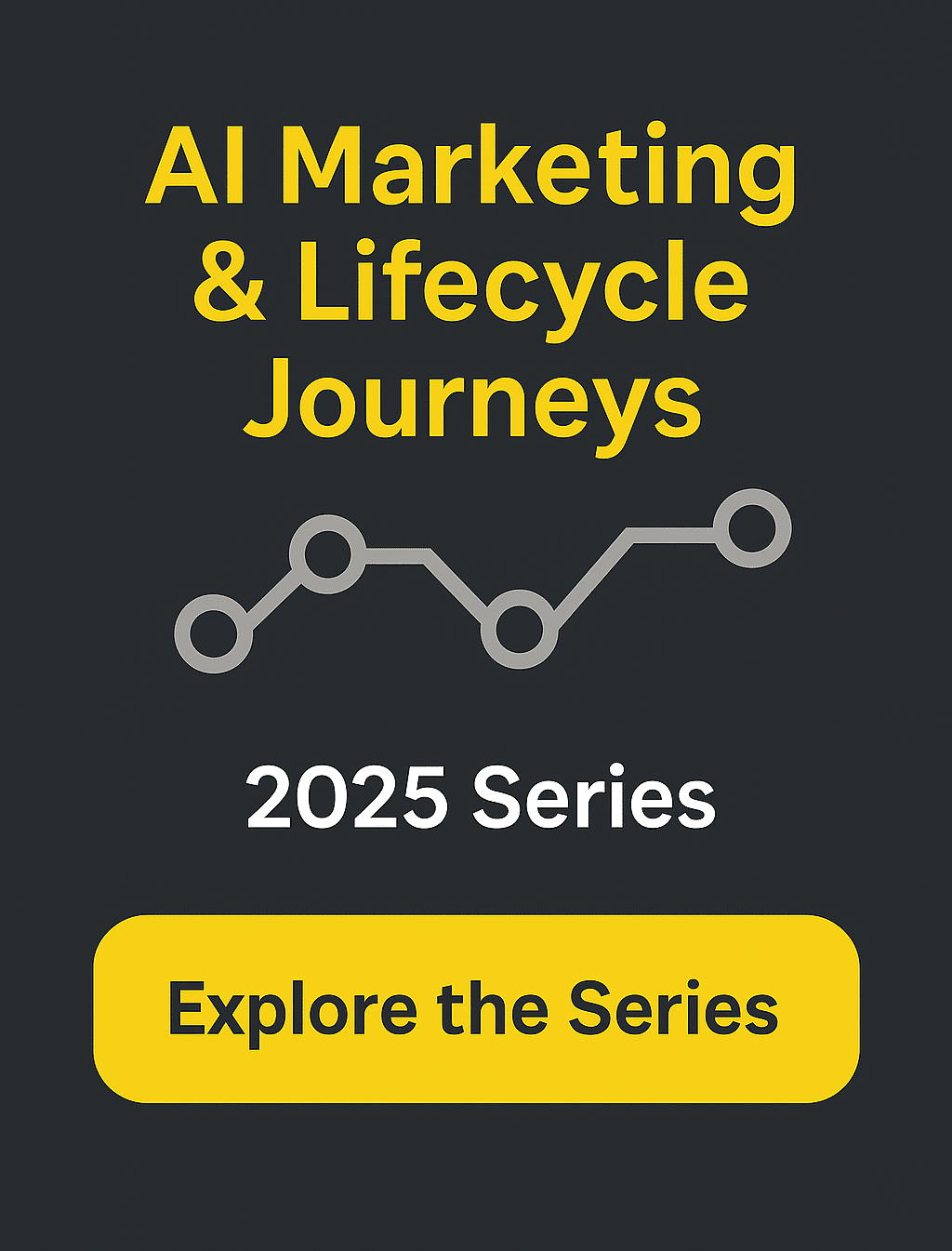This article is Part 2 of a two-part series that builds on my original post, AI-Driven Lifecycle Marketing. I’ve split the original into two shorter, more focused reads to make the content easier to navigate, especially for busy marketing teams exploring AI tools.
The AI hype cycle is loud, but for lifecycle marketers, the signal is clear: adapt or fall behind. It’s time to start future proofing lifecycle marketing by aligning AI tools with real human strategy.
That’s why I split the original article into two tighter reads, perfect for busy marketing teams trying to make sense of the AI wave.
Part 1 walked through current tools shaping smarter lifecycle campaigns. Part 2 (this one!) dives deeper: strategic alignment, ethical musts, and how to stay human in a tech-driven world.
1. Play to Your Strengths: Where AI Ends and You Begin
AI is a powerhouse. It detects patterns, runs tests at lightning speed, and adjusts to user behavior in real-time. But it doesn’t dream. And it doesn’t understand your brand the way you do.
Where AI Wins:
- Pattern recognition: It spots signals you’d never catch manually.
- Speed and scale: A/B tests and triggered emails? AI handles them effortlessly.
- Real-time learning: AI adapts with every click, open, or conversion event.
Where You Still Win:
- Tone & Messaging: Your audience’s humor, pain points, and language? That’s your superpower.
- Emotional resonance: AI can’t replace real storytelling—yet.
- Strategic intuition: You know when to break rules and when to play safe. AI doesn’t.
In a survey by The Conference Board (2024), 82% of marketers said AI would amplify, not replace, their capabilities, particularly in content ideation, campaign strategy, and audience empathy.
2. Marketing Ethically with AI: Avoiding the Trust
AI is only as ethical as the data it’s trained on. Biased data = biased output. And mishandled data? That’s a fast track to a PR disaster. What to watch for:
- Audit your training data: Are some groups under- or over-represented?
- Transparency matters: Tell users when content is AI-personalized.
- Consent is key: Surprise personalization erodes trust. Build opt-in paths.
Take the 2024 Apollo.io incident: the company scraped LinkedIn data for sales intelligence, triggering lawsuits and backlash. The tech wasn’t new. The trust breach was.
Best practices
- Use zero-party data (what customers willingly share).
- Review AI output for tone, clarity, and compliance.
- Stay informed on AI regulations like the EU AI Act and U.S. Algorithmic Accountability Act.
What’s Coming Next (And Why It Matters Now)
Here are four shifts to put on your radar:
1. AI content generation becomes the default
- 44% of marketers already use AI to repurpose content (Deloitte, 2023).
2. Personalization moves beyond text
- Think AI-generated video, voice messages, dynamic visuals.
- Brands like Spotify and Sephora are already experimenting.
3. Smarter programmatic targeting
- As cookies disappear, AI will lean on context and behavior to serve ads.
4. Ethics becomes a competitive advantage
- Transparent, fair AI use = trust. And trust = long-term retention.
Your AI Quick-Start Checklist
The brands that find the right AI-human balance won’t just survive the shift, they’ll define it. Because future-proofing lifecycle marketing isn’t just about keeping up. It’s about leading with integrity and insight.
- Audit one campaign where AI could reduce manual lift.
- Create a simple ethical checklist for your data practices.
- Host a 15-minute team brainstorm: what *should* stay human
Let’s make the future feel a little less robotic, and a lot more strategic.




